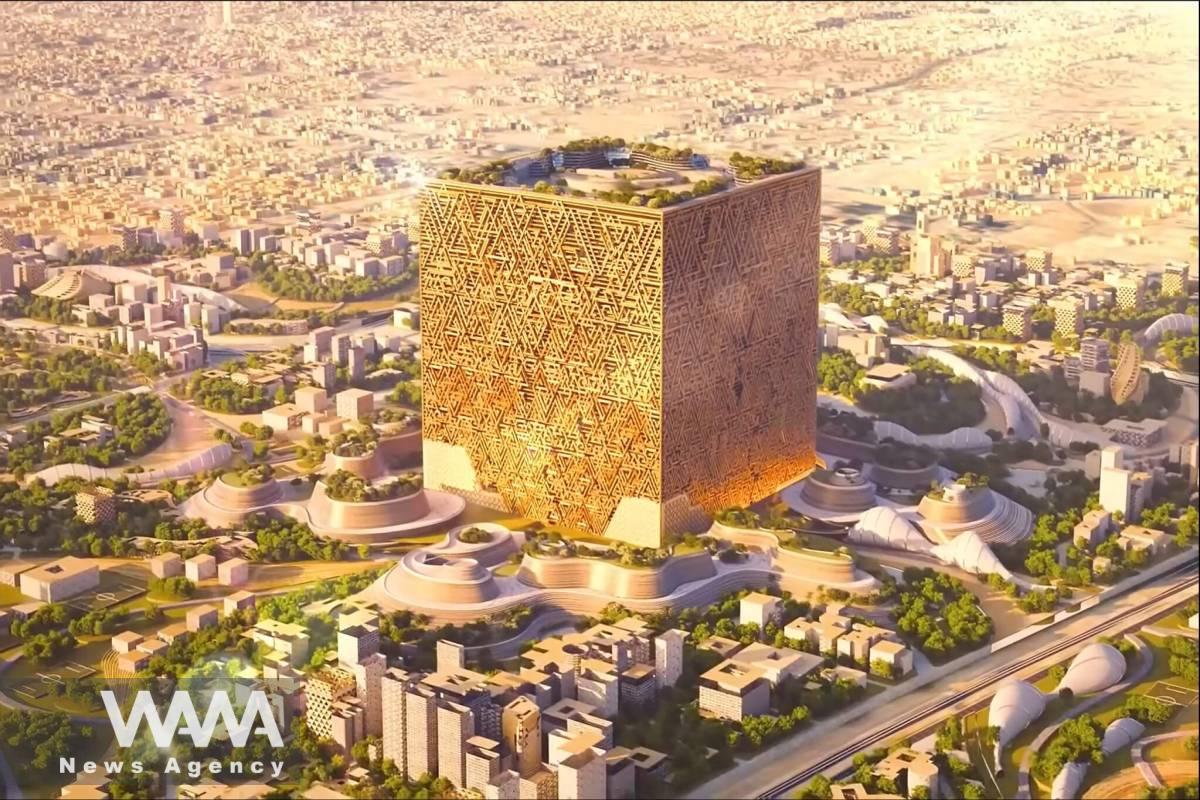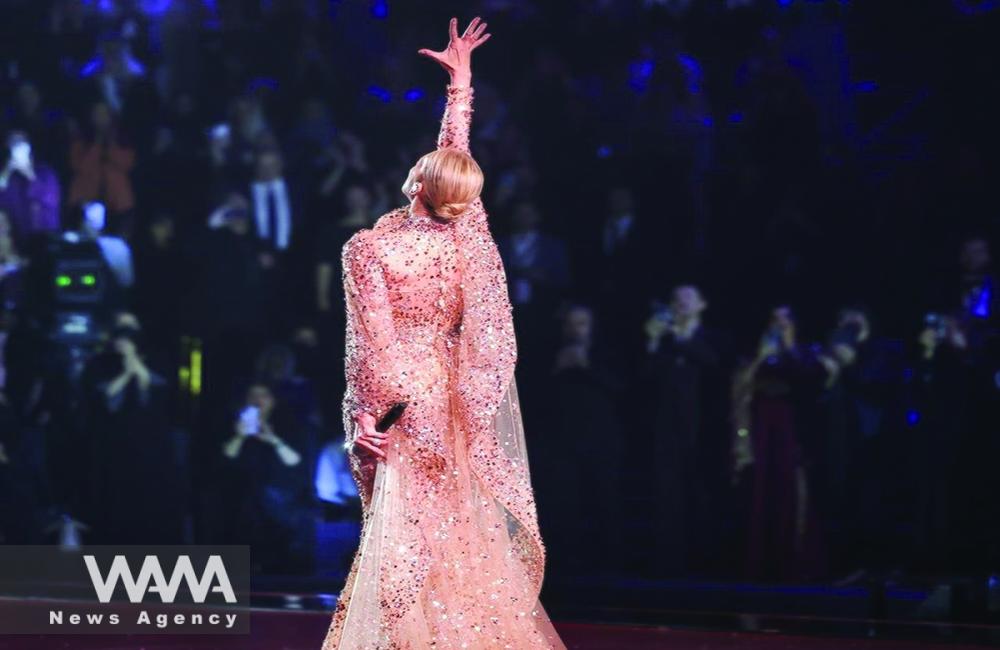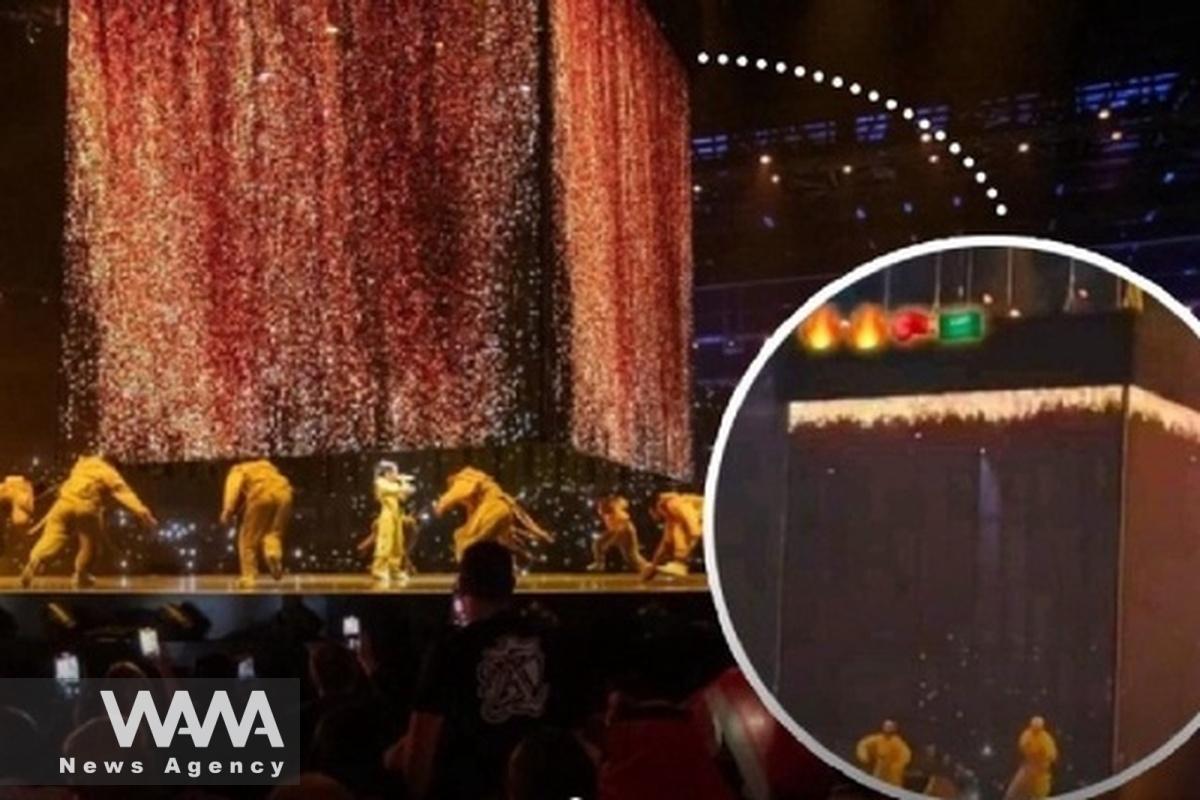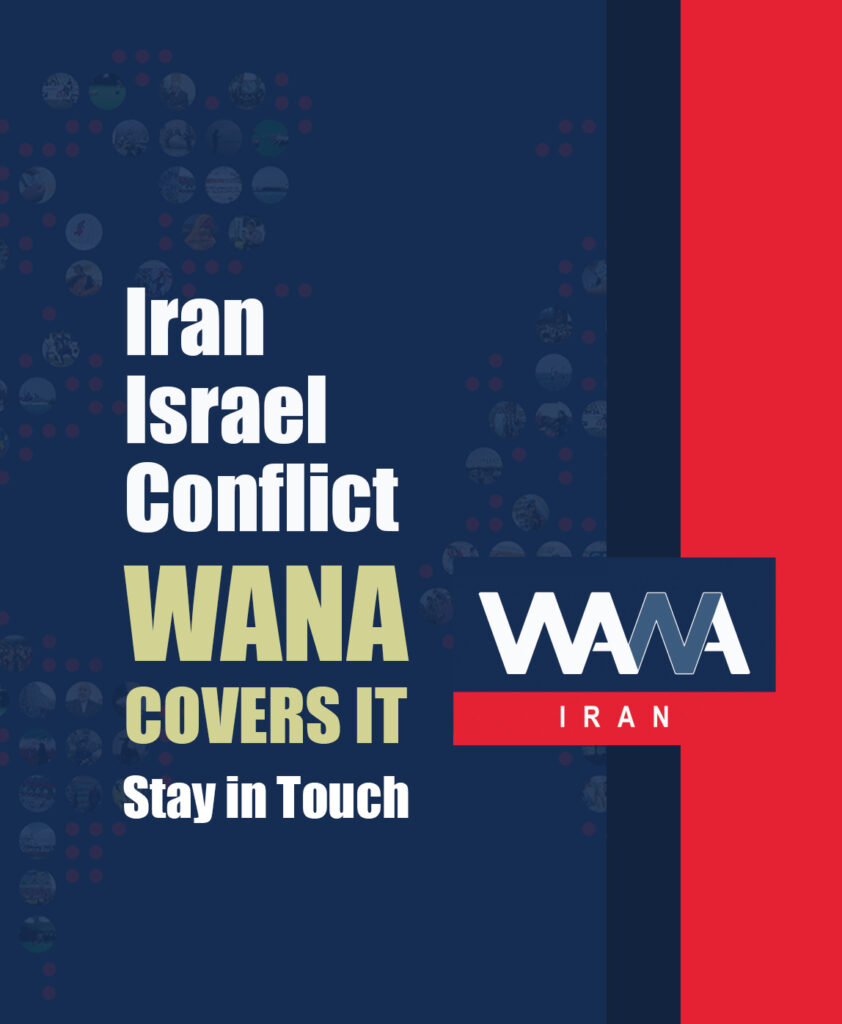Riyadh Season: A Festival at Odds with Islamic Traditions
WANA (Nov 24) – Saudi Arabia, with its extravagant and symbolic projects, seeks to present a new image to the world. The story of “cubes,” from the controversial “Cube of Najd” to symbols used in recent festivals, has captured global attention.
Recently, structures resembling the Kaaba have been constructed in Saudi Arabia, the birthplace of Islam and the sacred land of revelation. The construction of a massive cube-shaped building in Riyadh, referred to by many as the “Cube of Najd,” has sparked significant attention from religious communities. Critics have labeled the structure a mimicry of the Kaaba, interpreting it as an attempt to redefine Saudi Arabia’s religious symbols.

The cube is intended to be 400 meters (1,300 ft) tall and 400 meters (1,300 ft) wide on each of its four sides. Plans for the cube are part of the Saudi Vision 2030 project. Social Media / WANA News Agency
Meanwhile, Riyadh Season, part of the cultural transformation plan under Vision 2030, features events that prominently incorporate symbols clashing with the country’s religious and cultural beliefs.
In one such event, a cube was used as the centerpiece for the “Elie Saab” fashion festival. This structure, which many likened to the Kaaba, became a stage for dances and semi-nude displays. The event, particularly during a performance by American singer Jennifer Lopez, ignited widespread protests on social media.

A cube was used as the centerpiece for the “Elie Saab” fashion festival. Social Media / WANA News Agency
Images of Jennifer Lopez’s attire were particularly offensive to devout Muslims. The clothing of the 900 guests and 90 models, showcasing 300 different outfits, also drew individual criticism. Samshul Maarif, head of the Indonesian Center for Religious Studies, emphasized Saudi Arabia’s unique status as the custodian of the Kaaba and the Prophet’s Mosque. He insisted, “Such programs should not extend to the holy cities of Medina and Mecca. Saudis must understand that revenue generation cannot justify every approach.”
This festival, celebrating the 45th anniversary of the Elie Saab brand, brought together international stars like Jennifer Lopez, Celine Dion, and Nancy Ajram. The designs displayed not only lacked connection to Saudi Arabia’s native culture but, in some cases, starkly contradicted the country’s Islamic identity.

international stars like Jennifer Lopez, Celine Dion, and Nancy Ajram attended the “Elie Saab” fashion festival. Social Media /WANA News Agency
Turki Al-Sheikh, chairman of the General Entertainment Authority, stated that the festival aimed to position Saudi Arabia as a global entertainment destination.
Mohammed al-Bukhaiti, a political official from Yemen’s Houthi group, called the move “unjustifiable,” while several religious leaders viewed it as an insult to Islamic sanctities. Mamosta Hiwa Palani, an imam in Iran’s Sarpol-e Zahab, remarked, “Using the symbol of the Kaaba alongside music and unconventional performances is a blatant affront to the House of God and the Muslim community.”
The performances, including Becky G’s at the Riyadh Season’s opening, incorporated symbols like cubes and the numbers 666 and 999, sparking religious backlash and cultural criticism. For many, these displays were deemed unacceptable, especially in a land regarded as the spiritual center of Islam.
Saudi rulers claim this approach symbolizes “modernity and freedom,” but critics describe it as “cultural taboo-breaking” or even “eroding religious beliefs.” An Arabic-speaking social media user sarcastically wrote, “Is this the progress you promised us? Elie Saab at the expense of faith?”

A cube was used as the centerpiece for the “Elie Saab” fashion festival. Social Media / WANA News Agency
Such contradictions risk alienating global Muslim trust and support. If Saudi Arabia continues down this path, it may not only stray from its cultural and religious heritage but also undermine its standing as a spiritual leader in the Islamic world.
This move can be seen as part of Saudi Arabia’s competition with the UAE to attract foreign tourists. However, does the use of Islamic symbols in such contexts draw Muslims closer or push them away? Datuk Seri Zulkifli Mohamad Al-Bakri, a Malaysian religious leader, described this trend as “a return to the age of ignorance.”
Some experts argue that Islamic countries should respond collectively and consistently to such actions. As one expert put it, “Silence in the face of such behaviors equates to legitimizing the erosion of Islamic symbols.”














User comments